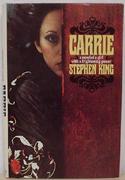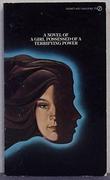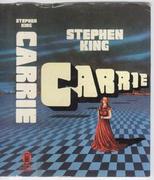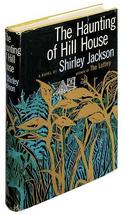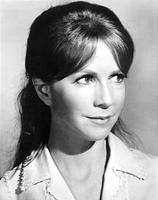by Michel Houellebecq
translation of HP Lovecraft: Contre le monde, contre la vie into English by Dorna Khazeni (2005)
with an introduction by Stephen King
and two stories by H.P. Lovecraft:
“The Call of Cthulhu” (1926)
“The Whisperer in Darkness” (1930)
Michel Houellbecq is a contemporary French author of some note, but I have not read any of his (other) works. Most articles about this (non-fiction) book, his first published work, discuss the ways in which it connects to his more famous, more recent novels. But I can’t comment on that because I don’t know.
My first encounter with Lovecraft’s astonishing name came when I played the old Infocom text adventure game The Lurking Horror, which stages Lovecraftian stuff at an essentially undisguised M.I.T. to create what must therefore be the nerdiest game of all time. It’s not bad. The unholy-summoning storyline is of course a big Lovecraft “homage,” but I didn’t know it at the time. I was only able to gather from context that his name (which makes a cameo as the name of a computer) was somehow a genre-appropriate “reference,” and I remember thinking that there was something etymologically unsavory about the idea that the words “love” and “craft” should in combination connote monsters and evil.
It was not until several years later that I finally saw evidence that “love-craft” had been a real person and a writer of horror stories: passing through the hallway of some other high school (on a “science team” trip, I believe!), I came across a copy of one of his story collections, abandoned on a table. Something still seemed unsavory. The book was from some godawful sci-fi publisher, had a terrible over-the-top illustration on it, and all around looked like something both obscure and shoddy. Infocom had expected me to know about this guy? It seemed to me like maybe he wasn’t a real writer, he was just some creepy underground thing for creepy underground people, best ignored – like, say, the Church of the SubGenius.
As the years went on, I continued to come across references to Lovecraft, many of them seeming to take for granted that his literary importance was widely acknowledged. Well, not by anyone I knew, it wasn’t! This was not an author that anyone ever seemed to read, nor one whose works were apparent at the bookstore. I knew where “important” authors’ names came up, and his didn’t. Nonetheless I seemed frequently to come across winking references to ridiculous garbage words like Cthulhu and Yog-Sothoth, as though the significance of this gobbledygook was common knowledge to normal cultured people.
You might well point out that I was, among other things, playing computer adventure games, so what did I expect? But the form and structure of the interlocking worlds of nerddom are not readily apparent to one who has only ventured into one or two of them.
Anyway, finally one day in college, while on duty at a very quiet library desk job, I decided to educate myself. So I and my roommate, who had come to hang out, read library copies of “The Dunwich Horror,” which had been recommended somewhere or other as Lovecraft’s greatest story. The horrendously overripe, relentlessly inelegant writing – humorless, monotonous, and altogether amateurish* – was a surprise. So was the particular combination of horror tropes (which I have since learned is exactly characteristic of Lovecraft): zoological mix-and-match half-human monsters with color-changing fins and such, IN COMBINATION with decrepit farmhouses and drawling, hostile New England country folk. These two varieties of horror didn’t seem like a natural match, to me, and yet here they were, unapologetically wedded, in this purportedly important story. My roommate thought the only redeeming aspect of the story was the opening passage, a description of the discomfort one feels driving deeper and deeper into the wild rural countryside. I thought the ultimate monster (an enormous egg-shaped mess of “squirming ropes” with a “half face”) was odd enough to deserve some respect. We also appreciated the historical significance of horror that was based on cosmic abominations rather than on mere hauntings and curses. Both of us agreed that as a whole it was really, really junky.
Now, armed with first-hand knowledge of just what the hell “H.P. Lovecraft” was, I was better able to be baffled by the breadth of his reputation. Who were these crazies calling him one of the major writers of the twentieth century? How had they convinced Penguin, and then this year – Good Lord! – The Library of America!? to buy into this? Who dared invent the notion of a “Lovecraft scholar?”
I am fascinated by the fact that Lovecraft, a phenomenally bad writer of phenomenally pulpy PULP – I mean really, the very pulpiest imaginable – is held in such high esteem by what seems to be an ever-widening circle of nerdified critics. Here, for example, is Joyce Carol Oates going off unreservedly about Howard Phillips. It make me feel a little lightheaded to think that when they’ve been coaxed into the right mood, critics are willing to overlook (or even embrace) the most glaring, painful, high-school-literary-magazine-grade stylistic offenses. How am I supposed to learn taste from these people when nobody seems to object to this most obvious tastelessness? And yet, for all that, I am simultaneously attracted to Lovecraft’s aesthetic goals, and pleased by the idea that all this eager critical disregard for his screaming faults is apparently motivated by a general enthusiasm for those goals.
The man wanted to recreate the unnerving sensations akin to fear that arise during dreams and fevers. I think that’s cool. Like Lovecraft, I think that there is, at least, the impression of profundity in these feelings, a subconscious suggestion that perhaps our basic assumptions about perception, experience, life on Earth, consciousness, reality at its basic level – perhaps these are flawed and subject to revision based on new information. A bit like the Timothy Leary types who insisted that LSD showed them new truths, there is a potent and upsetting impression, in certain dreams, that one’s understanding of THE NATURE OF ALL THINGS has been broadened. It’s not just any old being-weirded-out, it’s ominous and important being-weirded-out. The principle, I suppose, is that a broad enough sense of uncertainty and unease can call one’s whole life into perspective, which can be a gratifying experience. This sort of impression is hard to recreate while awake and sober, but when you get it, it’s really something. Pondering death is a natural way to get there, as is any real consideration of the depth of time and the size of the universe. But the impressions caused by these real-world thoughts are not nearly as potent as those in dreams, because at some level, we ARE always aware that we will eventually die, or that the universe is vast beyond our capacity to imagine. Whereas until we have it, we are completely unaware of the impression, in a dream, that the whole world is purple and dark and is slowly tilting and creaking. The unnameable, everything-revising implications of that experience will be felt to the fullest. My post about Scriabin’s Prometheus talked a bit about this, and how I respect it as an artistic goal, and enjoy it as an experience.** Lovecraft was going for something like that.
He was, in fact, going for a very particular subcategory of this experience. He had given the subject a lot of thought, and most of his stories are fixedly dedicated to a certain upsetting notion; namely, that the unsettling dream world of horrible not-rightness is in fact part of our world, a reality that existed before historical time and continues to exist outside normal space. Poe put it at the south pole and in tombs; Lovecraft does those, but he also adds that it is in outer space, and, most importantly, somewhere magically parallel to us, the ether from which demons and such can be summoned. He takes old quasi-religious notions of ghosts and netherworlds from from the long tradition of alchemy- and magic-based ghost stories, and blends them with the surreal discomforts of dream-horror. Or he works dream-horror into the old mythological constructions about gods meddling among humans. Basically, his inspiration was that the powerful horror of the surreal can be worked into ghost stories, monster stories, god stories. That’s it. It’s a good idea, and yes, in one way or another it’s the foundational idea behind pretty much all horror today. I like it. Is it brilliant? I don’t know; it’s not as though Lovecraft really invented it himself. But he clarified it and pursued it with a certain consistency of concept, which is no small thing.
So to sum up: I think Lovecraft was a bad writer, but the idea(s) for which he’s known are good, and interesting to me.
I saw this book (this is about that book, remember) on display on the new non-fiction table when the translation came out earlier this year, and was immediately attracted by the title: Against the World, Against Life. It seemed to be talking about the crux of the Lovecraftian concept: that fascinating, horrifying dream-rejection of reality. The first pages were compelling; the author was talking about H.P. Lovecraft’s actual problems coping with the real world and suggesting that the peculiar anti-reality stance of his horror was actually a sort of philosophical position, and that it appeals to readers who at some level also hate reality. The psychological functions of horror interest me, and the idea of a book taking this tone toward Lovecraft seemed very appealing. I also think, for personal reasons, that Lovecraft’s biography of utter pathetic grinding hopeless failure is an interesting backdrop to his bad but beloved art, and seeing it worked into this thesis was satisfying. So (a little later) I bought the book and read it.
Unfortunately, it’s much more fannish and obnoxious than I expected. Houellebecq loves Lovecraft, and loves his own intensity in loving Lovecraft, and seems ultimately like another example of the fixation on Lovecraft himself that for some reason characterizes his readers. His emphasis on world-hating flaunts a sort of perverse enthusiasm that, I have read, is typical of Houellebecq, whose novels are apparently misanthropic in the extreme. With this sort of attitude, he’s not the right person to be discussing the work; he just barely feels that it needs defending, and most of his arguments seem like calmly self-satisfied perversion rather than a good faith offering of thought. The mission statement on the first page, “We need a supreme antidote to all forms of realism,” which struck me as charmingly bold at first, turns out to be a deadpan that is never dropped. Does he really believe it? Hard to say what that question means. One might well ask whether he really likes Lovecraft after all, or is just putting on a show. Though I am inclined to think that he really does like Lovecraft, since he talks about discovering him as a child. I think a kid’s enthusiasm for monsters is never a put-on. And I’m willing to believe that Houellebecq really thinks that life is beastly and horror is the proper response to it. But that, as they say, is his problem. He certainly didn’t convince me otherwise.
See this entry for a little bit about the book’s attitude toward Lovecraft’s prose style. Then check out this satisfying letter in which the excellent ghost story writer M.R. James (much admired by H.P.) mentions “one H.P. Lovecraft, whose style is of the most offensive.”
The one really valuable insight provided by the book (though still with a hint of tasteless, nihilistic pride) is that Lovecraft’s reccurent sub-human horrors are in fact directly derived from his own deeply felt racism. There is a really remarkable passage quoted from one of Lovecraft’s letters, sounding just like one of his overblown (“overblown” is much too mild a word) fictional passages of revulsion, but describing his experience walking down the ethnically mixed horror streets of New York City, where he briefly attempted to have a life and utterly failed. I felt like it really made everything about Lovecraft click into place – the fear we are being made to feel is racial fear, with all its various strata of disgust – pseudo-rational social and biological disgust, but always, fundamentally, a simple bigot’s displeasure with the unfamiliar. More generally, a man who lived his life alone in his room is a man whose basic discomfort with the unknown, even the benign unknown, must have been incredibly acute. It is as though his stories are furiously grotesque projections of, say, my mild anxieties about talking to strangers.
This psychological clue to Lovecraft’s horror, and horror in general, was interesting to me, and Houellebecq initiated it, but Houellebecq himself seems to dismiss it in favor of actually endorsing the conclusions Lovecraft drew about how awful life was, even as he illustrates their ridiculous extremity. What does Houellebecq think of Lovecraft’s phenomenal racism? He doesn’t lower himself to say; he’d rather keep up the show of being an apostle of nihilism.
Meanwhile, the introduction by Stephen King is really lazy and smarmy – this coming from someone who in general has no problem with Stephen King – and is an all-around bizarro pairing for the book. King offers us some downright stupid bitter put-downs for literary criticism in general, and then tells us that the present book isn’t really one of those books, even though it is. Then he rambles about himself at some length. My impression was that he had breezed through the book inattentively and is glad to write an introduction to just about anything. At one point he says something like, “I agree with everything that Houellebecq says…except for his idea that Lovecraft hated life and that you have to hate life to enjoy Lovecraft. In fact, that’s not true.” Seriously, he says that. It also made me cringe when he copies out Houellebecq’s flamboyantly niihilistic chapter-headings (“Attack the story like a radiant suicide,” “Utter the great NO to life without weakness,” etc.) and then says something dense like, “yeah, I agree with that.”
Which, finally, brings me to the Lovecraft stories that pad out the back of the book. I had read neither of them. The first was the famous “The Call of Cthulhu.” Cthulhu, for those of you who have never set foot in a comic book store, is a horrible octopusish god thing that lives in a sunken nightmare city and calls out psychically to sensitive types, who have bad dreams about him. The city rises up for a day in the Pacific somewhere, and some people in a boat come across it, and open a big portal, and Cthulhu rises out, but one guy gets away to tell the tale. There were elements of the story that were nice ideas – the idea that people all over the world are vaguely aware of this thing, that images of it show up in all different cultures, including ongoing secret cults, and that it has been sleeping since ancient times but will return…it’s all nice, though the awful prose slows it down. Most of the pleasure I took in these ideas came after reading the klutzy prose, digesting it, and then thinking about it all afterward. But the worst, I think, is that this dreamed thing actually shows up at the end of the story, and is basically a Godzilla – a big old slimy monster trudging out of the depths. I’ll grant that maintaining a sense of unreality is a tough challenge when the narrative approaches its object, but I would say this ultimately failed.
The second story was better, probably the best I’d ever read by H.P.: “The Whisperer in Darkness.” It was long but the prose was significantly cleaner than his other writing, I thought, so I didn’t much mind the length. This one was about evil aliens who live in New Hampshire. A not-so-clever but still effective conceit for keeping things at a satisfying distance is used – the horrors are mostly described to us by a skeptical narrator who hears about stuff through a written correspondence with a believer. The believer sends him bits of evidence that give him doubts. Etc. Then, in the last section of the story, the narrator travels up into the woods to meet the believer, whose letters have suddenly changed in tone and who now seems to love the aliens. You can see where this is going, but it goes there with a little bit of flair. The whisperer of the title is the believer character (maybe) sitting almost completely muffled up in the corner of the farmhouse, moving stiffly, and hoarsely telling the narrator about how wonderful it will be to have his mind removed from his body and taken to faraway worlds by the aliens. To the just-discovered Pluto, in fact, where the aliens are from. They call it Yuggoth.
It was actually kind of a fun story, though the final punchline is pretty clearly telegraphed by what comes before, so the ending is a little anti-climactic. But the horror, I would say, was not dreamlike, not really. This was your typical story of lobster aliens deceiving people in New Hampshire, and as such set itself an easier task.
Okay, I’m done with this, finally, though I just had another thought about Lovecraft, so I guess I’ll end with this. He writes in that style we know so well from old newspapers: the stilted, wordy, overpadded propriety of the mustachioed old men of the turn of the century. Despite the fact that it’s 1925, Lovecraft thinks that he’s one of those old men and he thinks that style is super keen, a really dignified, solid weight in his pen, which he, like those old men, will nourish with selected power words from his own particular storehouse, and bring to poetic heights with romantic outpourings. To him, his Oh god! The thing had no face! Such eldritch abominations cannot be! is just a new spin on the old O! My love, death has taken thee! And now his fans buy into it as well: Lovecraft was a great old man of literature; he wrote important texts with dignity.
Can’t we all be a little more embarrassed about all this? That’s all I ask.
